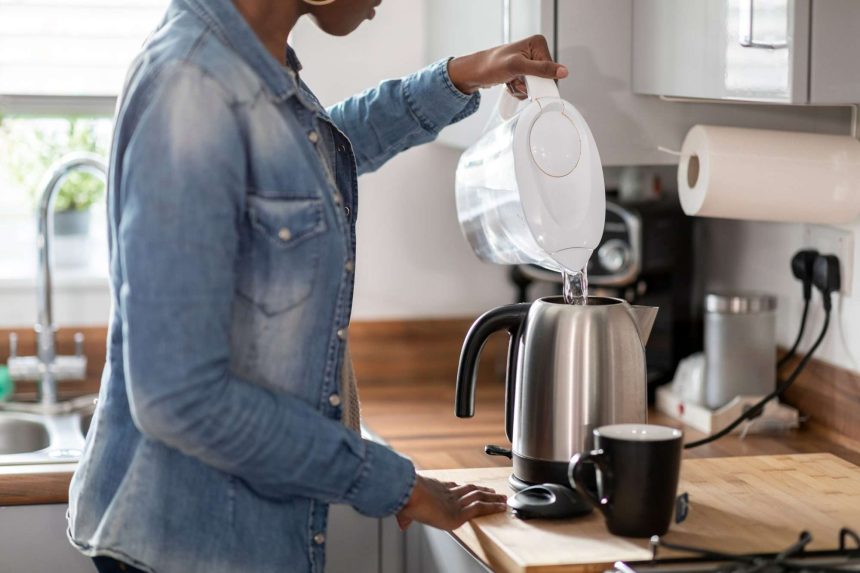The whistle of boiling water, that first sip—everything about a cup of tea or pour-over coffee deserves to be savored. And you can get there faster and easier with an electric kettle. But just like your other kitchen tools and appliances, your electric kettle can benefit from regular care. Learning how to clean it properly will help it continue working efficiently and keep your drinks tasting fresh.
Let’s break down how to clean your electric kettle, why it’s important, and tips to keep it sparkling like new.
Dawn Arias-Spinelli, professional cleaner and owner of Kleaner Image, a cleaning company serving Jersey Shore homes
How Often Should You Clean Your Electric Kettle?
It may seem tempting to wait until your kettle is visibly grimy or its performance is lagging before giving it a good clean, but this isn’t the best approach. Depending on how frequently you use it and your water’s hardness, you should aim to clean your kettle once every month or two, says cleaning expert Dawn Arias-Spinelli, owner of Kleaner Image. Regular maintenance ensures you never have to deal with a buildup of hard water deposits that could damage the kettle or affect its performance.
If you notice that it’s taking longer than usual for the kettle to boil water or if there’s a strange smell or taste coming from your tea or coffee, it’s a sure sign that it’s time for a thorough cleaning.
How to Clean an Electric Kettle, Step-by-Step
Your electric kettle is one of those hardworking kitchen gadgets that often goes unnoticed—until it’s not working quite right. Over time, mineral deposits or limescale can build up on the interior of the kettle, especially in areas with hard water. If left unchecked, this residue can make the kettle less efficient, causing it to take longer to boil water. It can also affect the flavor of your drinks or transfer that buildup or bacteria to what you’re consuming. The good news? Keeping your electric kettle clean is an easy and quick way to ensure it performs at its best.
Materials Needed:
- White vinegar
- Baking soda
- Mild dish soap
- Soft toothbrush
- Microfiber cloths
Instructions:
- Check (and double-check) that the kettle is turned off and unplugged. If there is a cord, ensure that it is kept out of the water’s reach.
- Remove limescale with a homemade vinegar solution. Add a 50/50 mixture of water and white vinegar to the kettle. Let it sit for about 30 minutes to an hour. You can find further descaling instructions here if needed.
- Boil the water, then discard. Rinse the kettle thoroughly to remove any lingering vinegar smell.
- Clean the exterior of the kettle. “You can use a soft, damp cloth with gentle dish soap to wipe away any water spots, fingerprints, or grime,” says Arias-Spinelli. Pay special attention to the lid and spout.” If your kettle’s lid is removable, remove it and clean it thoroughly. An old, soft toothbrush can be useful for reaching nooks and crannies that are harder to reach.
- You can make a mild paste of baking soda and water for stubborn stains. Gently apply the paste to the stains and buff it away with a damp microfiber cloth.
- Dry with a clean microfiber cloth.
Tips to Help Keep Your Electric Kettle Clean
Keeping your kettle clean is all about small, routine changes. Here are some helpful tips to prevent grime and buildup.
- If your tap water is particularly hard, consider using filtered water. Filtered water can significantly reduce mineral deposits inside your kettle, keeping it cleaner for longer.
- Empty the kettle after use. It’s tempting to leave water sitting in the kettle, especially if you will use it again soon. However, leftover water can encourage mineral and bacteria buildup, so try to empty the kettle after each use.
- Use a kettle descaling solution regularly. If your area has particularly hard water, investing in a descaling solution can help maintain your appliance’s performance over time.






